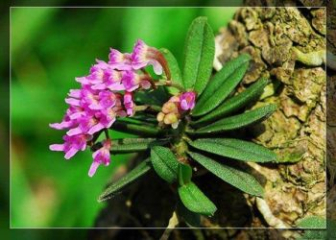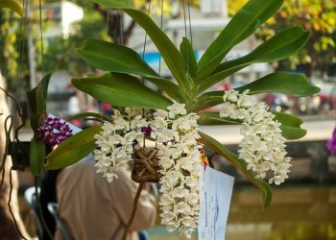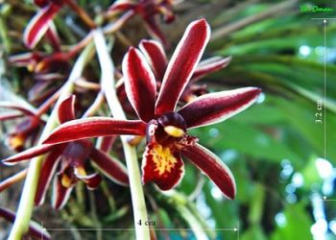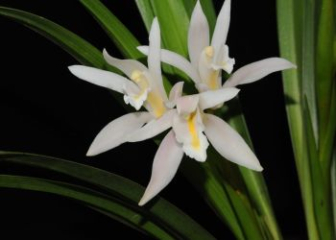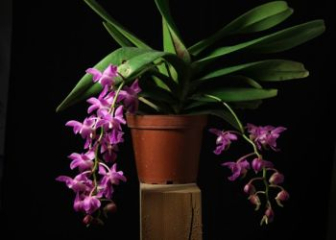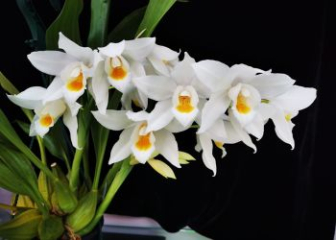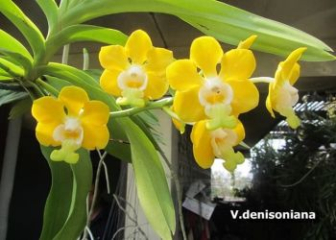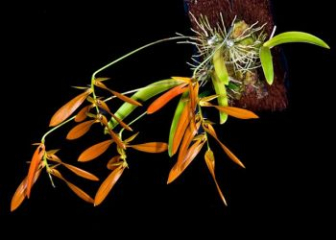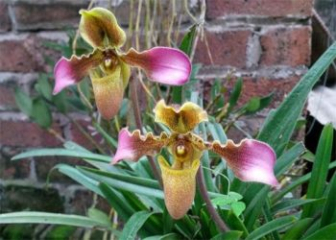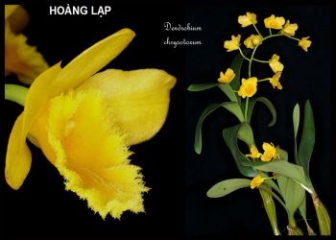Cyclamen Orchid - Origin, characteristics and how to grow
Blog | by
Dendrobium tortile is a wild orchid with a special appearance with twisted petals and a pleasant fragrance, easy to grow & care for, and low cost.
Cyclamen Orchid (scientific name: Dendrobium tortile) is one of the most unique looking wild orchids in the mountains of Southeast Asia. With its elegant white-purple or white-pink twisted petals and gentle fragrance, this orchid is very attractive to orchid lovers.
In today's article, let's learn more about the twisted orchid with wild orchids to help you successfully conquer this beautiful orchid species on your first try.
Origin of Cyclamen Orchid
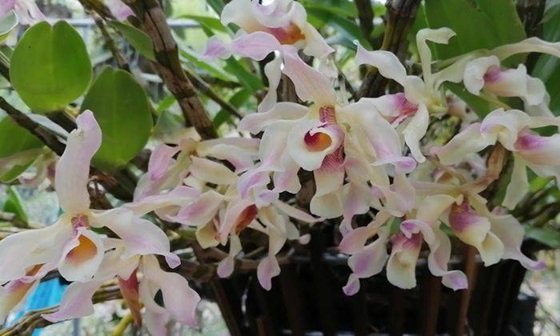
Cyclamen Dendrobium is a species of wild orchid native to Southeast Asia.
Dendrobium tortile, scientifically known as Dendrobium tortile, is a species of wild orchid belonging to the genus Dendrobium, originating from the high mountains of Southeast Asia. Common in the following countries:
- Vietnam: Lao Cai, Lai Chau, Ha Giang, and the Central Highlands
- Laos, Thailand, Nepal, India, Myanmar,...
The name “tortile” is Latin for “twisted,” describing the characteristic curly petal shape of this orchid.
In nature, Cyclamen orchids often live epiphytically on large tree trunks in humid forests, at an altitude of 1000 - 2000m above sea level, where there is a lot of fog, high humidity and scattered light.
In Vietnam, the Cyclamen Dendrobium is one of the rare native wild orchid species, however, its number in the wild is seriously decreasing due to overexploitation. In some localities such as Lao Cai and Lai Chau, this orchid species is even included in the list of protected species.
What is special about the Cymbidium Orchid?
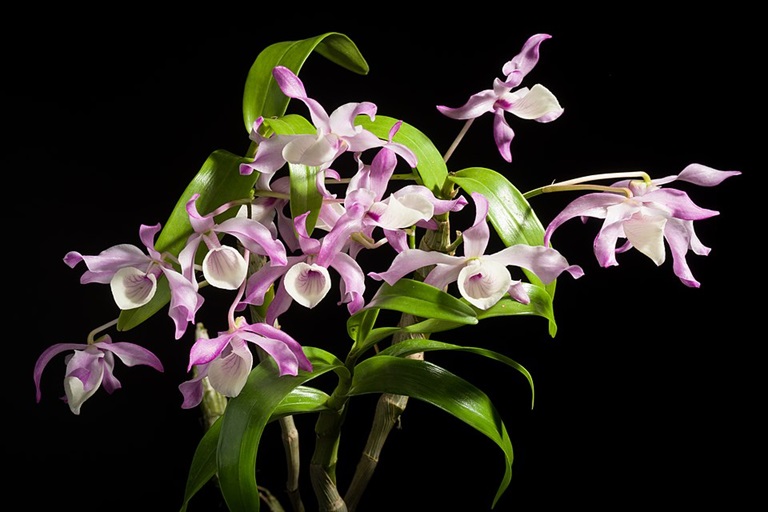
The Cyclamen orchid flowers have a characteristic curly petal shape.
True to its name “Rotary Orchid”, this orchid has a very special appearance with unique twisted petals. Let’s learn more about the outstanding features of their shape below.
Pseudo-stem:
- The stem can grow hanging down or growing upright, is cylindrical, slightly flat, and grows vertically upwards.
- The body is usually 30 - 80 cm long, divided into many distinct segments.
Leaves :
- Leaves are oblong, pointed at the tip, have a longitudinal groove in the middle, and are slightly twisted.
- Leaves are light green to dark green.
- Leaves grow alternately on both sides of the stem, concentrated in the upper half of the stem and above.
Roots :
- Wind-like roots, white or ivory in color
- Roots grow from pseudobulbs
Flower :
- Flowers grow from deciduous stems (concentrated on the upper half of the stem)
- Each flower eye grows from 1 - 3 flowers, diameter from 4 - 5 cm
- Uniquely twisted petals and sepals, usually pinkish white or pale purple-white
- The wide flared lip is usually white.
- Flowers usually bloom from February to April, each flower blooms for 5 - 10 days, depending on weather conditions.
Detailed techniques for planting and caring for Cymbidium orchids for beginners
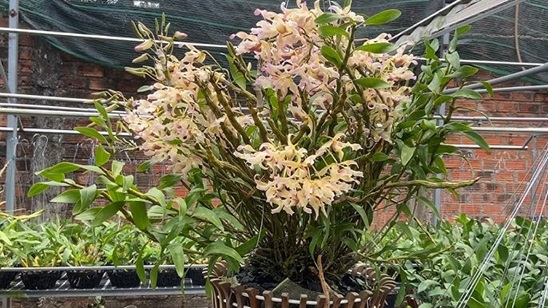
Instructions for growing Cymbidium orchids from A to Z.
Although the Cymbidium orchid is quite easy to grow, to help the orchid grow in the best way, please refer to the planting and care techniques shared in detail below.
Selecting and processing Cymbidium orchid varieties
The most important thing that determines whether the Cymbidium orchid can take root soon and grow best is that you need to pay attention right from the stage of selecting and processing the seeds. Please follow the instructions below.
Criteria for selecting standard twisted orchid varieties :
- Choose varieties with strong, shiny stems, not bruised or rotten.
- Prioritize plants with many dormant buds and many young growing roots.
- Choose domesticated trees instead of wild ones.
Seed treatment (forest stripped, uncultivated trees) :
- Trim away damaged roots and old rotten roots.
- Soak the tree roots in Physan 20 solution (1ml/1 liter of water) or lime water for about 15-20 minutes, then take them out and hang them in a ventilated place for 2-3 days before planting.
- If you want to stimulate root growth for seedlings, you can soak the base of the tree in a diluted mixture of B1 + Atonik + Humic to stimulate root growth.
Select and process the substrate
Cyclamen Dendrobium is a species that likes ventilation and does not tolerate humidity well, so you need to choose a substrate that is airy, well-drained and has the ability to retain light moisture.
You can choose from the following types of substrates:
- Longan wood, star apple wood
- coir board, coir stalk
- Charcoal
- Pine bark
- Moss
- Pumice
And to avoid spreading disease to Cymbidium orchids, you need to treat the growing medium before planting to remove fungi and bacteria.
- Wash away dirt and impurities with clean water
- Soak the substrate in lime water, Physan 20 solution.
- Dry the growing medium in the mild sunlight to let it dry naturally.
Detailed techniques for planting and grafting Cymbidium orchids
To help the Cymbidium orchid take root soon and grow best to produce brilliant flower clusters, please refer to the orchid planting and grafting techniques shared here.
Twisted Dendrobium orchid grafting technique :
- Use nylon wire or zinc wire to fix the orchid roots to the wooden board, with the dormant buds facing out to help the orchid grow easily.
- If planted in hot sunlight, add dry moss at the base of the orchid to keep it moist.
- Hang the wooden board in a shady, slightly sunny, airy place and do not water for the first week, just spray lightly.
Techniques for growing Cymbidium orchids :
- Line a layer of pumice and charcoal at the bottom of the pot.
- Next add a mixture of pine bark, dry moss or crushed charcoal.
- Place the Cymbidium orchid on the edge of the pot, with the base higher than the surface of the substrate.
- Use wooden sticks to fix the orchid roots.
- Use a spray bottle to lightly spray the orchid roots.
How to water Cyclamen orchids
Watering seems simple, but if watered incorrectly, it can easily cause the orchid to contract some diseases such as fungus and waterlogged roots. Please follow the instructions below to ensure your orchid still grows well.
- Sunny season : Water 1 - 2 times/day, depending on the substrate and weather.
- Rainy season : only water when the substrate is dry.
- During the resting period from November to January : Reduce watering frequency to 1-2 times/week to help the plant differentiate flower buds.
Fertilizing Cymbidium Orchids in Each Stage
In addition to planting and watering properly, you should add fertilizer to help the Cymbidium orchid grow strongly, bloom beautifully, and in season.
- Development stage: Spray B1 + Atonik according to instructions on the package to help the plant take root quickly.
- Growth stage : Spray alternately with root stimulants such as N3M, Terra Sorb 4 combined with organic fertilizers such as fish protein, slow-release fertilizer,...
- Rest period (November-January) : Stop fertilizing
- Flowering stage : Switch to NPK 6-30-30 combined with B1
Disease prevention for Cymbidium orchids
Although Cymbidium orchids have good adaptability, if you do not know how to take good care of them, they can easily get some common diseases such as root rot, soft stem, leaf spots, aphids, etc. Here are some effective disease prevention measures, don't miss them.
- Keep the orchid growing environment airy, avoid rain and strong winds.
- Regularly cut off yellow leaves and rotten, mushy pseudobulbs to prevent spreading.
- Do not water at night, do not water the roots
- Sprinkle lime powder around the pot to prevent snails from causing harm.
- Spray insecticides such as Confidor and Movento regularly, diluted, every 7 days.
- Spray antifungal drugs such as Antracol 70 WP, Aliette periodically every 15 days.
Price list of Cymbidium orchids
Currently, Cymbidium orchids are sold very popularly in Vietnam through orchid gardens, groups or e-commerce sites with many different prices. For detailed information, please refer to the price list shared below.
|
Cyclamen orchid |
Reference price (VND) |
Note |
|
Wild Twisted Orchid |
22,500 - 50,000 VND/tree |
Wild-cut, untamed goods, sold in bundles |
|
Pure Twisted Dendrobium |
180,000 - 250,000 VND/tree |
Purebred, grafted, strong roots |
|
Pure potted Cymbidium Orchid |
200,000 - 400,000 VND/pot |
Potted, easy to care for, ready to bloom |
|
Beautiful twisted orchid |
300,000 - 500,000 VND/pot/pot |
Beautiful pot, flowers available |
Note:
- For those who do not have much experience, they should choose potted orchid varieties because they are easy to care for and easy to bloom.
- You should buy from reputable orchid gardens to ensure the quality of orchid seedlings.
- You should avoid buying flowers from February to April because this is the time when orchids bloom so the price is relatively high.
Questions and answers about Cymbidium orchids
Are Cymbidium orchids difficult to grow?
No, this orchid is very easy to grow, as long as you master the basic techniques we shared above.
Should Cymbidium orchids be grown in pots or grafted onto wood?
Depending on the conditions and climate, you can grow Cymbidium orchids in pots or on wood, because growing in pots has good moisture retention and is easy to move, while growing in wood grafts is very airy, creating beautiful flower shapes but requires regular watering.
Is Cymbidium fragrant?
Cyclamen orchid has a light, refreshing fragrance, not too strong.
Beautiful twisted orchid pictures
Let's admire the collection of super beautiful twisted orchid images with unique curly petals and dreamy purple color that we share below to fully feel the elegant beauty of this wild orchid.
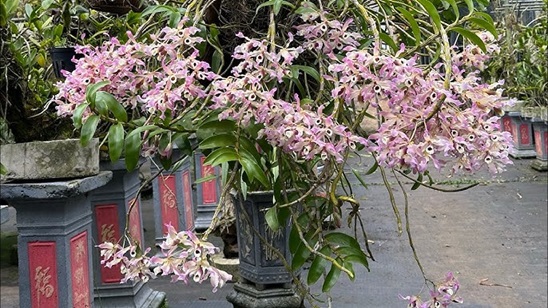
A giant pot of Cymbidium orchids is in full bloom.
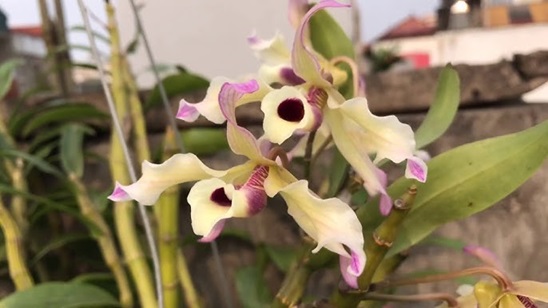
Close-up of the unique shaped Cymbidium orchid.
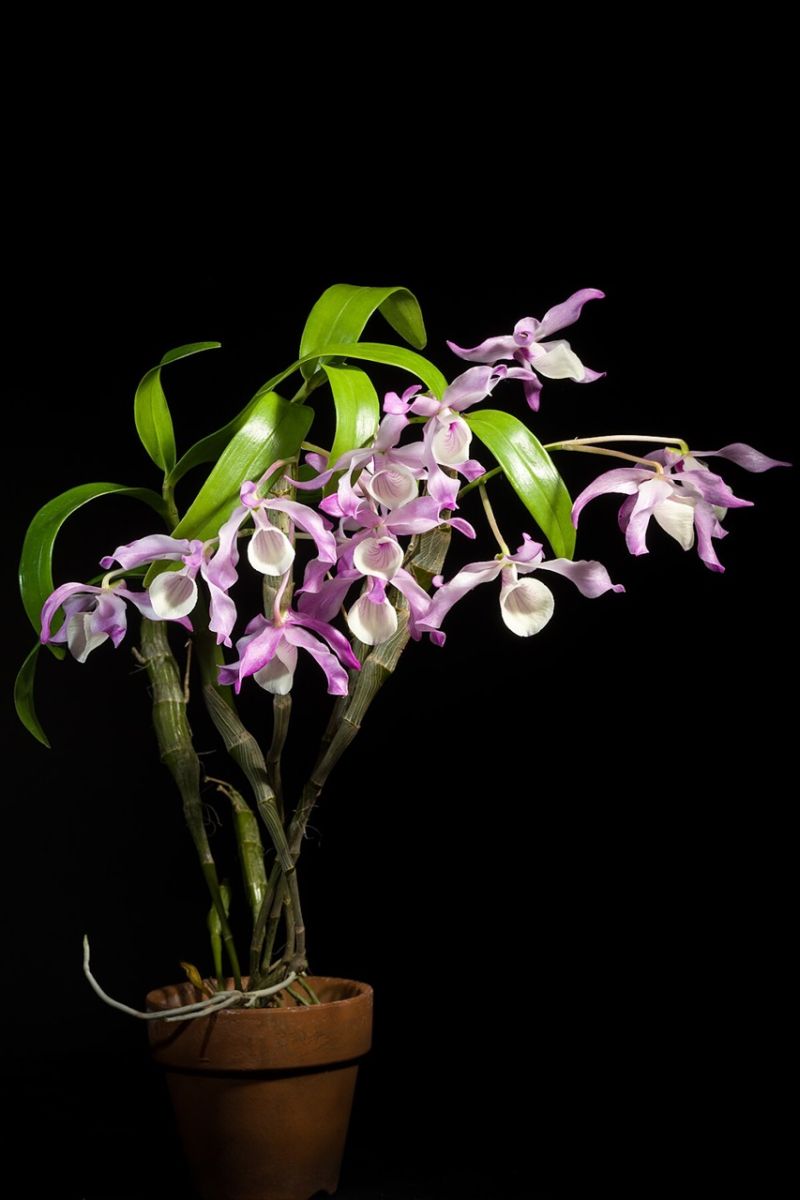
A super beautiful pot of Cymbidium orchid.
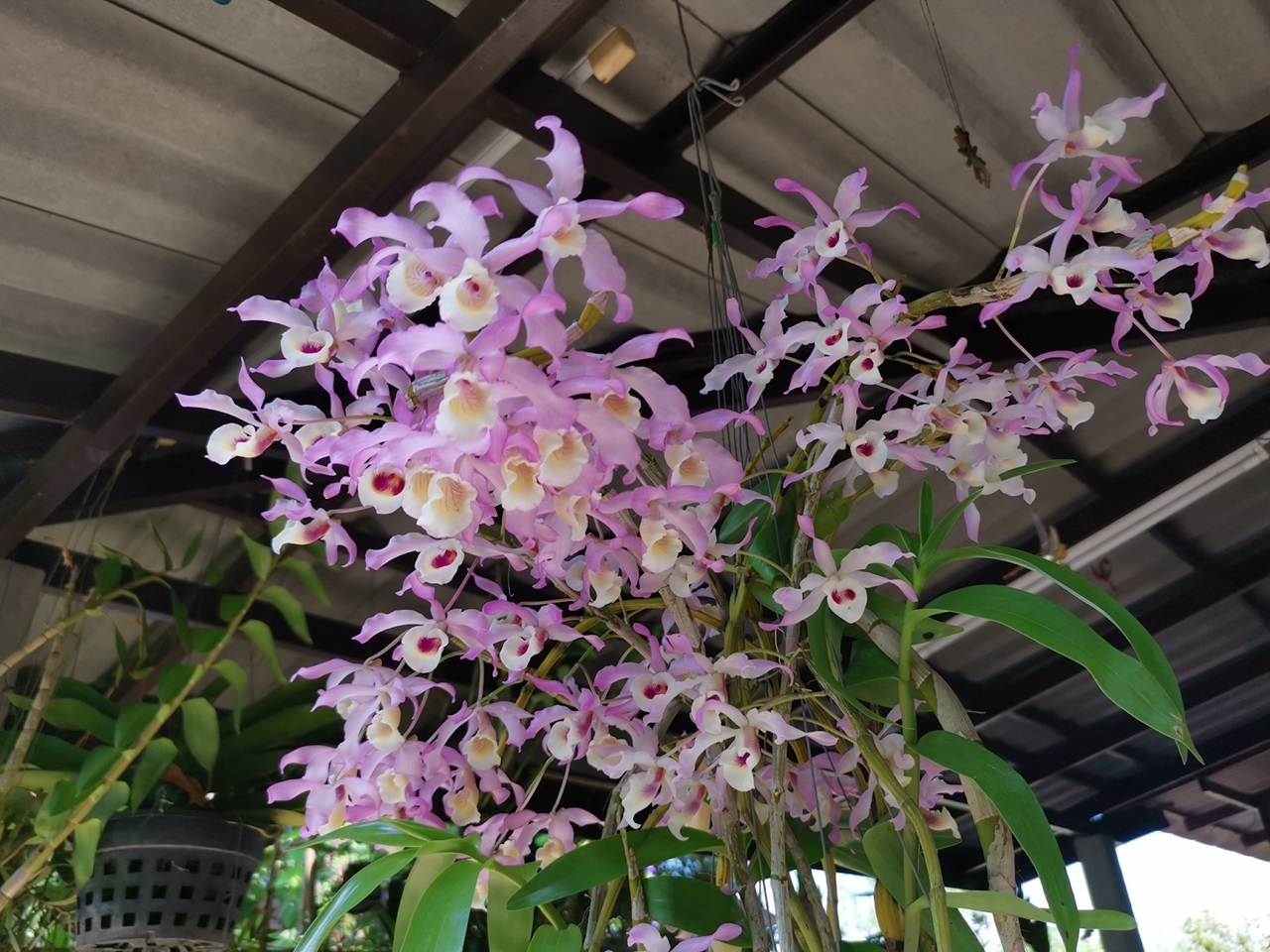
The Cymbidium orchids are swirling with noble beauty.
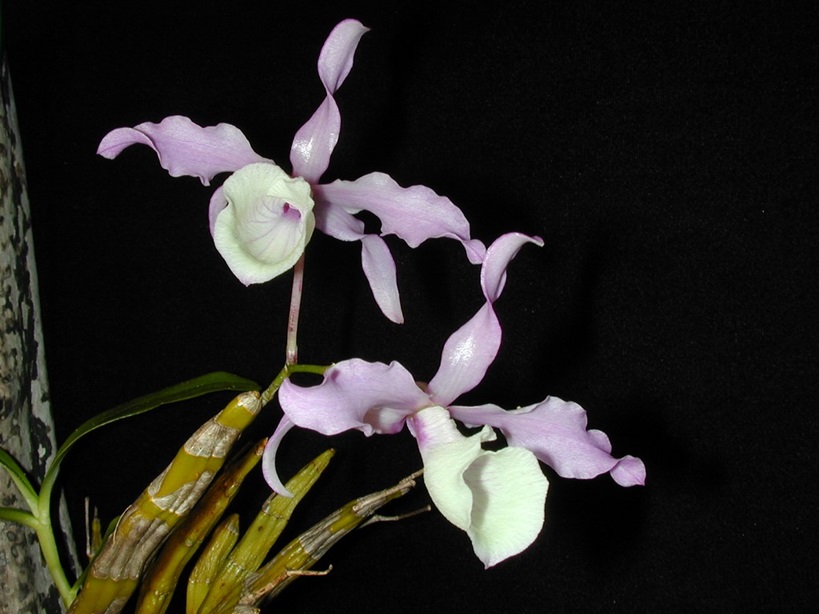
Cyclamen orchid with fragile but extremely impressive beauty.
Through the above article, orchid-vn.com has shared with you all the information about Dendrobium tortile - one of the wild orchids with a unique and attractive appearance. Hopefully, you have gained a lot of experience to grow & care for this orchid to bloom in season.
Don't forget to visit our Blog section to read more interesting articles about other beautiful and rare orchids. Who knows, you might find some unique orchids to decorate your garden.
